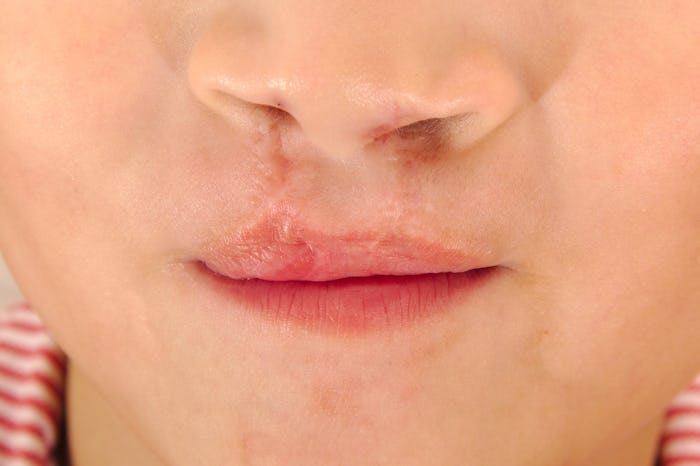Life

Here's How Doctors Fix A Cleft Palate
When I was in high school, I learned about cleft lips. Though I had seen one or two kids with a cleft lip as a child, I never quite knew what it was or how it happened until a teammate of mine explained it to me. After she told me that she was born with the birth defect, she revealed to me that her newborn sister — who also had a cleft lip — had a cleft palate and would have to get it fixed soon. Then I started to wonder how do they fix a cleft palate and, more importantly, what was it exactly?
According to Nemours, orofacial clefts — which include both cleft palates and cleft lips — are one of the most common birth defects for babies born in the United States. Since it is so common, the site noted that the defect is treatable and can usually be repaired within the first year or two of life. Though it's not really known how either is caused, a cleft is formed when parts of the lip and mouth do not completely fuse together. Nemours also went on to note that, while a cleft lip can occasionally be seen during an ultrasound, a cleft palate can only be discovered when the inside of a child's mouth is carefully examined after birth.
So how exactly is it fixed? According to WebMD, the repair of a cleft palate will often require multiple surgeries over the course of 18 years. The first surgery, which occurs between 6 and 12 months of age, creates a functional palate and aids in the proper development of the teeth and facial bones. By the age of 8 years old, a child with a cleft palate may need a bone graft to fill the upper gum line to support permanent teeth. Braces may also be needed to help straighten out the teeth. The University of Iowa Stead Family Children’s Hospital's website also went on to note that additional surgeries in to early adulthood could be needed to improve the child's speech.
Since there are a number of medical problems associated with a cleft palate surgery, WebMD noted that a team of doctors and specialists are enlisted to help fix the defect. Plastic and oral surgeon, an otolaryngologist, orthodontist, dentist, prosthodontist, speech pathologist, speech therapist, geneticist, and a psychologist will work together to assist the child and family deal with the aftermath of the surgery.